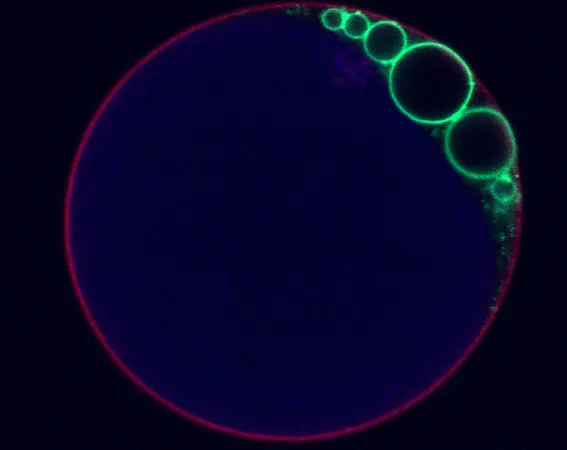Sometimes plant cells do not have just one large central cavity, or vacuole, but several, and these can even have different functions. How is that possible? A team led by UvA biologists Ronald Koes and Francesca Quattrocchio took another step towards solving this fundamental biological riddle. Their discovery has been published in the scientific journal Cell Reports.
If you open a random book on biology and look up a picture of a plant cell, you will see that there is always a large cavity in the middle of these cells: the vacuole. It is an important cellular storage place in which plants can store all kinds of substances. The vacuole contains both reserve nutrients and waste products, vacuoles in the cells on the surface of flowers contain pigments that determine the flower color, in fruits they contain the acids and sugars that give the fruits their taste, plants growing in salty conditions can store excess salt in vacuoles, and so on. Thus far this seems pretty straightforward.
 A cell from the epidermis of a petal from a petunia flower. The outer cell membrane is labeled in red, the central vacuole is filled with anthocyanins resulting in the blue color, and vacuolinos are marked in green (Copyright: UvA).
A cell from the epidermis of a petal from a petunia flower. The outer cell membrane is labeled in red, the central vacuole is filled with anthocyanins resulting in the blue color, and vacuolinos are marked in green (Copyright: UvA).
Biological riddle
"About twenty years ago, it was discovered that some plant cells have multiple vacuoles and that these can also have very different functions," says Ronald Koes. "Since then, the big question is how this is possible. How do these additional vacuoles form? How does the plant cell know which substances have to go to one vacuole and which to the other?"
This biological riddle fascinated Koes and his wife Francesca Quattrocchio, who both work as geneticists and molecular biologists at the Swammerdam Institute for Life Sciences at the University of Amsterdam. They found the first possible clue towards the solution in 2017. Back then Quattrocchio and Koes led a team that discovered a completely new type of component of plant cells: smaller vesicles containing the same substances as the vacuole, which transported these substances to the central vacuole. They called these extra vacuoles vacuolinos (Italian for small vacuoles).
New step
In a study now published in the scientific journal Cell Reports, the biologists describe a new step towards solving the fundamental riddle. Having previously discovered the existence of the vacuolinos, they have now also discovered which gene is crucial for the formation of vacuolinos: a gene called RAB5a. Through experiments with petunias, the researchers discovered that switching off this gene ensures that the petunia cells no longer contain vacuolinos. On the other hand, overexpression of the gene leads to larger vacuolinos. "They can become so big that they almost look like vacuoles themselves," says Koes.
Quattrocchio and Koes noticed that the RAB5a gene became very active in the cells of the flower buds of their petunias during a late stage of development. Pigment production happens at an early stage. The result was that, in addition to the central vacuole, which contained a lot of pigment, several large vacuolinos were created in which no pigment could be seen. "What was interesting was that the size and number of those vacuolinos determined not only the color but also the shape of the cells and thus the petals," says Quattrocchio. Koes adds: "What this also shows is that perhaps it is not always necessary to have a complex sorting mechanism in the plant cells to determine which substances do and do not end up in one of a number of vacuoles. It is also possible that this is regulated automatically, because the additional vacuoles arise at a different moment in time."
Other plants
The RAB5a gene is present in many plant species, suggesting Quattrocchio and Koes have discovered a fairly universal biological mechanism. The gene is for example also active in citrus fruits. "So perhaps the cells of citrus fruits also contain vacuolinos," says Koes. The question is what their function is here. A few years ago the team described a fundamental biological mechanism that regulates how much acid is present in the vacuole of citrus fruit cells, which determines how sour or sweet the fruit tastes. It is still speculation, but with the discovery of vacuolinos and these first insights into their function, Koes and Quattrocchio may have found another fundamental biological mechanism that determines the taste of citrus fruits.
There is, by the way, an important exception when it comes to plants that have RAB5a: Arabidopsis, the much-studied plant that biologists see as a good standard model, does not have this gene.
Shuangjiang Li, Ronald Koes, Francesca M. Quattrocchio et al, An ancient RAB5 governs the formation of additional vacuoles and cell shape in petunia petals, in: Cell reports, September 2021, DOI: https://doi.org/10.1016/j .cellrep.2021.109749
For more information:
University of Amsterdam
www.uva.nl
